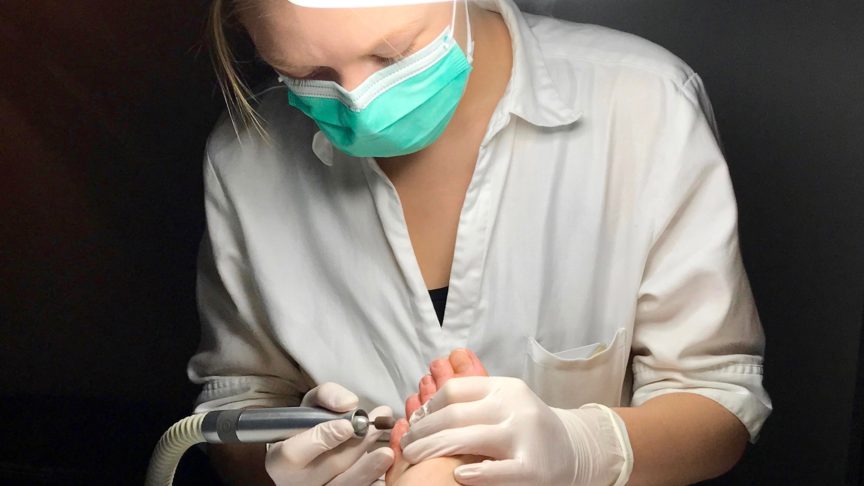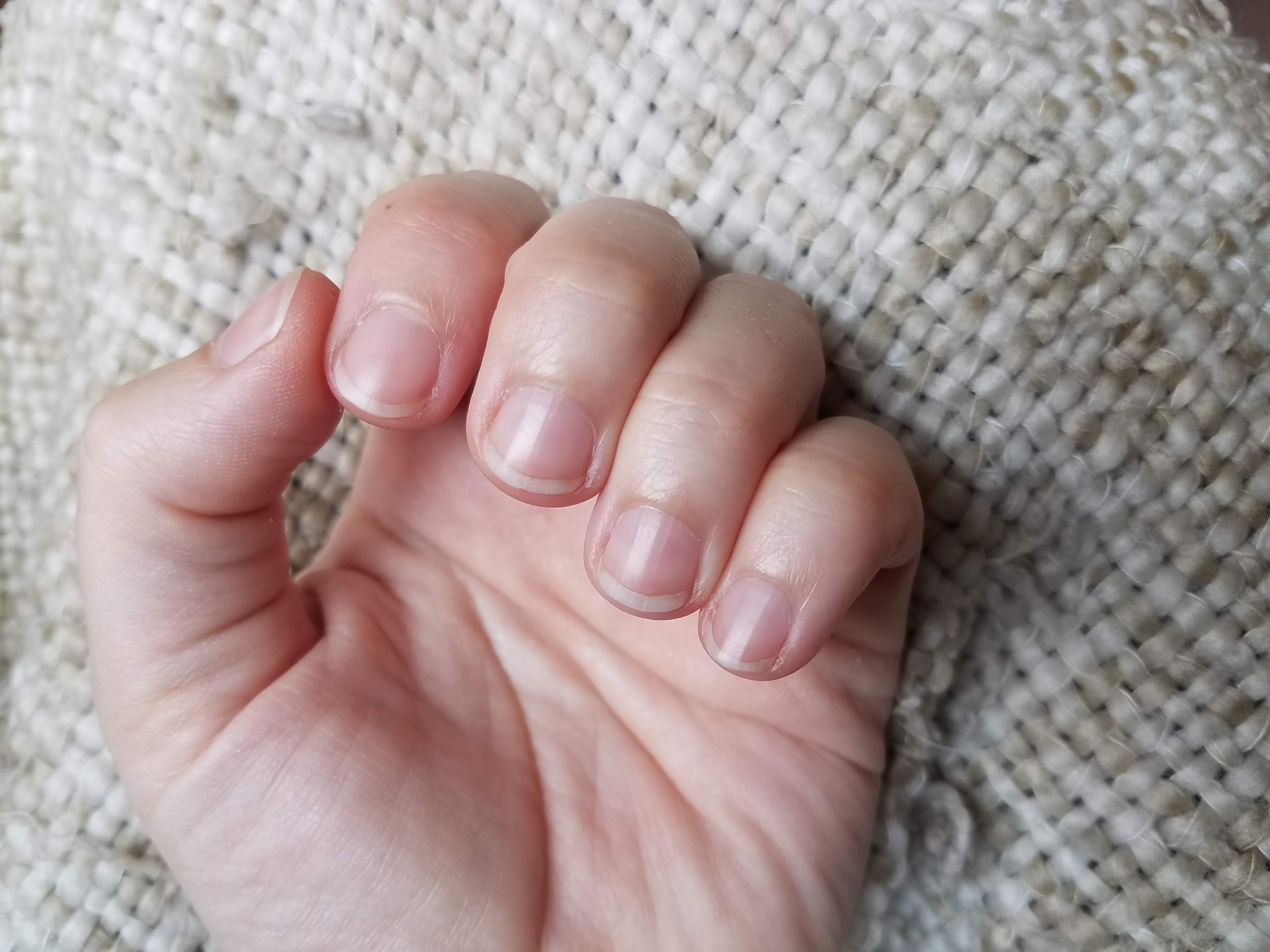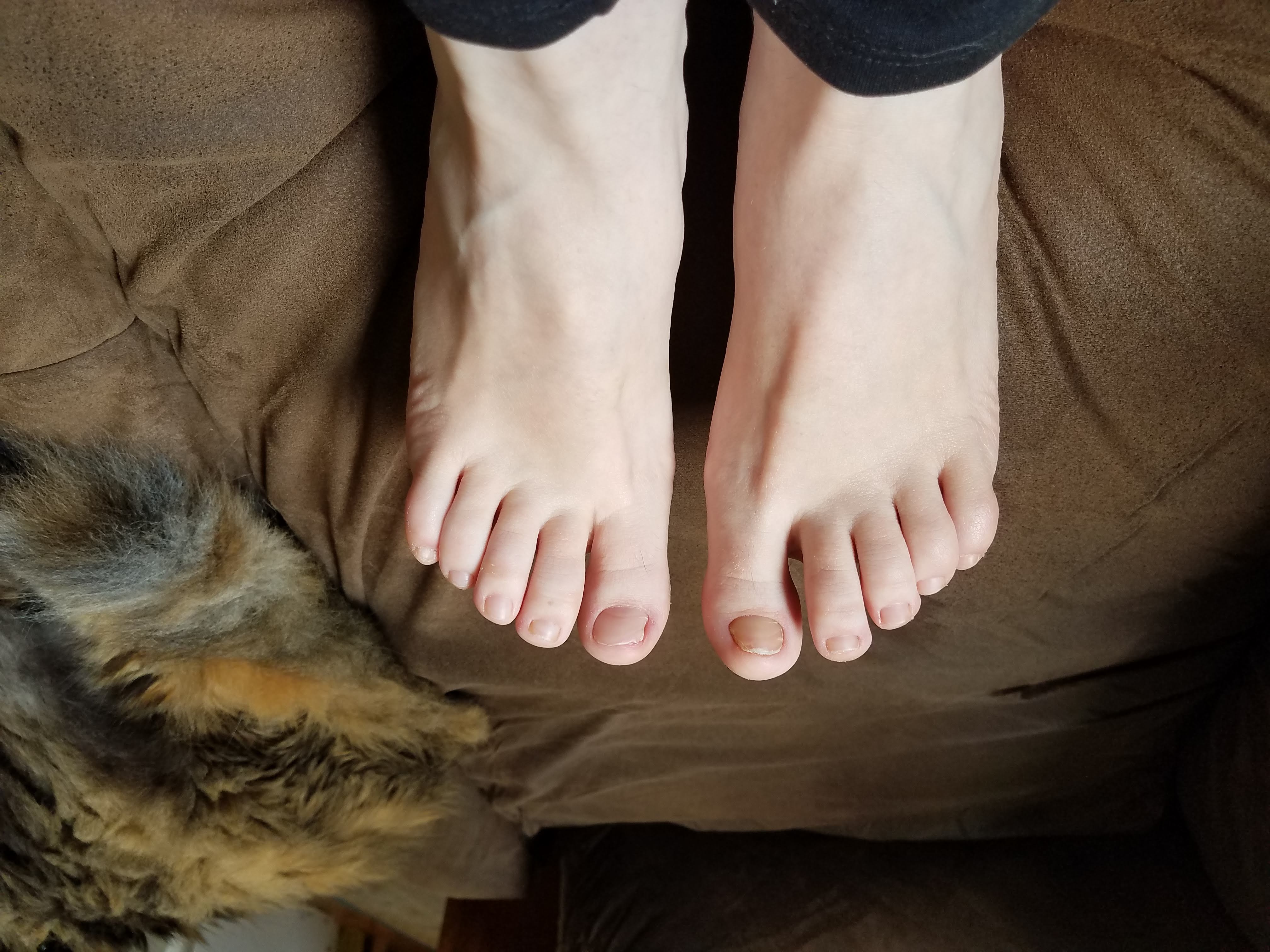In last week’s post,[1] we looked at the dangers inherent in nail polish itself, both from the standpoint of weakening your nails by keeping them constantly polished and from contact with toxic chemicals that are frequently included in the product. Additionally, we examined some risks associated with patronizing a nail salon or – more importantly – working in one. The health risks for workers and potential for exploitation come with the job, but customers have some of the most power by voting with their dollars.
Paradigm Shift
I’m not saying every salon exploits is workers, but I did discover in my research for this series that the risk of exploitation and/or occupational hazards are high. One way, perhaps the most effective way, to combat exploitation is to make it less profitable. Of course, if you choose not to patronize a salon that has safe or equitable work practices, the salon will make less money, and so will the workers. With enough of that type of economic pressure, the salon may suffer or close, and their workers may lose their jobs.
Ultimately, though, the idea is to break the system of exploitation by eliminating demand for low-cost services and creating demand for ethically and safely provided services. As long as regulations are 1) insufficient or 2) easily skirted, the most effective course of action is to make exploitation unprofitable. The positive side of this scenario is that if customers make ethical treatment of employees a priority, salons that adhere to fair work practices will experience increased demand, and they will likely need to hire additional employees. Customer priorities can help to generate jobs with better working conditions.
However, I recognize that many people go to low-cost salons because that is what they can afford. I myself am one of many who still worry about how safe the mani-pedi process can be (for customers and workers alike), even when the salon is paying their workers fair wages and adhering to state and federal regulations. For people in both of those categories, there are some alternatives. First, getting a no-polish manicure at a reputable salon still supports the business, is probably at least a little cheaper than the full treatment, and limits everyone’s exposure to phthalates, VOCs, and other toxins. Second, you have the option of taking care of your nails at home.

Alternative Approaches
Ultimately, doing one’s nails at home – or not, as the case may be – has been the only option during the past year and a half, particularly in the early days of the pandemic when non-essential businesses were closed. For some who removed the nail polish and went natural for a few months, they found that their nail health had improved, and that their nails look better than they did before. The business world is taking notice of such newfound discoveries and exploring motivations behind certain behaviors. Some research by cosmetic companies indicates that frequency of mani-pedi appointments pre-pandemic was less about enjoying the process and more about complying with beauty standards.[3]
As I described in part one, I clearly care less about mainstream beauty standards than a large percentage of my gender, but I do feel self-conscious about the damage my toenails have sustained over years of running. While I don’t want manicured toenails, I would like healthy-looking toenails. And that trend – the “medical pedicure” – is more mainstream in Europe. The idea behind this process is more about promoting foot and health, which will lead to attractive nails, rather than trying to cover flaws, which can create or exacerbate health problems.[4]
After reading several articles on this trend of foot care (as opposed to foot shame) I decided to do something I had never done before… give myself a pedicure. There were two things I wanted to find out: whether I could make my toenails look good enough that I would be comfortable posting a picture of them online, and whether I thought the result was worth the time commitment. And a time commitment it was.
Do It Yourself
My regular nail care routine involves clipping them whenever they get too long to be practical – that is true for fingers and toes. I think about them very little in between and provide them with very little pampering. For those of you who have never done a pedicure at home before, I had to assemble the following items: nail clippers with a file, a towel, a small tub that fit my feet, moisturizing lotion (olive oil also works!), and a buffer. You can certainly get more extravagant, but I was pleased to learn that I had almost everything I needed on-hand already. I did not know what a buffer was, but after some Googling and a quick trip to the pharmacy, I was the slightly embarrassed owner of a nail shaping block that had different grit surfaces on each side.

As I assembled these items and told Christian that it was research for the blog, he unsuccessfully stifled some laughter. We sat and watched the Olympics while I worked my way through the process, checking a reference page every step of the way and leaving out steps I didn’t want to include.[5]
First, I soaked my feet for about 10 minutes, which felt wonderfully indulgent. It’s important to make sure that your feet and all of your tools are clean, so a little bit of soap in the water isn’t a bad idea. After drying your feet, you can buff callouses with a pumice stone or a file, but I didn’t have either and chose not to anyway. Next I gently pushed my cuticles back so they were all even. I mentioned in last week’s post that cutting and even pushing back cuticles can provide the opportunity for bacteria to get under the nail, so do not trim your own cuticles, and if you insist on pushing them back, do it gently.
After that, I trimmed my toenails. When doing this, you should cut straight across with the clippers and shape the ends with a file, which will help to prevent ingrown toenails. Also, when filing, it is best to file in one direction only to limit damage to the nail. (I know this technique from wood shop, not nail care, but the principle is the same.) After I had cut and shaped my nails, I sanded the tops with the buffer. Most of my nails have subtle ridges, and the buffer helped to smooth them out, creating a surface more akin to what you would get with nail polish.
Some of my toenails, particularly the ones I’ve lost on one or more occasions are thick, brittle, and opaque, indicating some kind of fungal infection. It is possible, though slow-going, to buff the nail down so it is thinner and clearer. Podiatrists will do this more quickly with a dremel tool,[6] but it is important to take this step slowly if you’re going to do it, which is why the buffer is a good option, especially if it’s your first time. You can always take more of the nail off; you can’t put it back if you were too enthusiastic.
Finally, I moisturized my feet with lotion, giving myself a little massage in the process. Olive oil and coconut oil [7] are also great options for cuticle and nail health, though I haven’t used them at all since I did my nails.

A Long-Term Solution?
My toenails were in such bad shape that it took me the better part of an hour and a half to soak, clip, file, buff, and moisturize them. Granted, I also did my fingernails while I was at it, but 90 minutes seems like a lot for a mani-pedi, even for one where I didn’t have to make an appointment and drive to a salon. While the result is nowhere near salon quality (this was my first time, and I was starting from a very unattractive baseline), I would say my toes look far better and healthier than they have since before I started running. They may even be able to pass for normal, un-manicured nails if no one looks too closely.
As for what I considered to be a huge time commitment, I feel like I could have spent it doing something less vain and more productive. I haven’t yet decided if I’m going to repeat this activity in the future, but for now I’m thoroughly enjoying wearing sandals with significantly less shame than I have in the past. I’ll be curious to see what quarantine trends stick around once we’re back to “normal,” and how much ethical and environmental factors play a role in our choices moving forward.
~
Have you changed your nail care or other beauty regimens during the pandemic? Do you plan to return to your former routine? I’d love to hear about what has and hasn’t worked for you.
Thanks for reading!
[1] https://radicalmoderate.online/killer-cosmetics-nail-polish-part-2/
[2] https://shesintheglow.com/what-is-a-medical-pedicure/
[3] https://www.nytimes.com/2020/11/05/style/self-care-is-this-the-end-of-the-manicure.html
[4] https://shesintheglow.com/what-is-a-medical-pedicure/
[5] https://www.byrdie.com/how-to-give-yourself-a-professional-pedicure-346824
[6] https://newsnetwork.mayoclinic.org/discussion/mayo-clinic-q-and-a-toenail-fungus-often-difficult-to-eliminate-completely/
[7] https://doctorsklineandgreen.com/is-coconut-oil-good-for-your-nails/
2 Comments
Jean · August 8, 2021 at 11:26 am
I got so tired of doing my own nails I tried gel manicures at the salon as the color lasts 2-3 weeks instead of one. After 5 months I noticed my nails felt soft when the gel was removed so I immediately stopped. As you know I have very strong nails that grow so long I have to cut them but since I stopped the gel they are very weak and rip or split easily. That was 3 months ago and I don’t know if they will ever go back to their previous health. I would deter anyone thinking of trying gel. Thanks for all the research😘
Alison · August 29, 2021 at 8:11 pm
I’m so sorry to hear that your nails were so damaged by the gel! I hope their strength returns with time – let me know if they do!